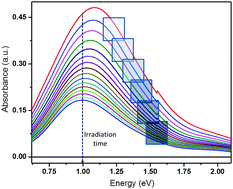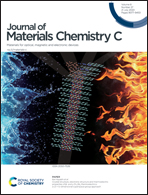Investigation on the coloring and bleaching processes of WO3−x photochromic thin films
Abstract
WO3−x (oxygen deficient tungsten oxide) thin films and WO3−x/Ta2O5 (tantalum oxide) composite films exhibit a huge photochromic effect with 60% near-infrared transmission modulation, in comparison to results in the literature. The colouring efficiency of such films results from both the stoichiometry of the particles (oxygen/tungsten deficient ratio) and the quality of the films (films are thin, homogeneous, and constituted of nanoparticles of about 5 nm in diameter and so with low scattering). Additionally, the high colouring efficiency obtained with a low fluence ultraviolet (UV) lamp is followed by a nearly complete bleaching phenomenon after a few hours in the dark. Beyond the attractiveness of our films toward multiple applications, and especially as films able to regulate the solar flow through smart windows, the optical properties and the colouring and bleaching kinetics were deeply investigated. For both the WO3−x thin films and the WO3−x/Ta2O5 composite films, colouring under irradiation and bleaching in the dark are phenomena that both proceed with a complex kinetics combining ultra-fast processes (from charge transfer, with a characteristic time of about one minute) and slower processes (linked to ionic diffusion, with a characteristic time of about one hour or even longer).



 Please wait while we load your content...
Please wait while we load your content...